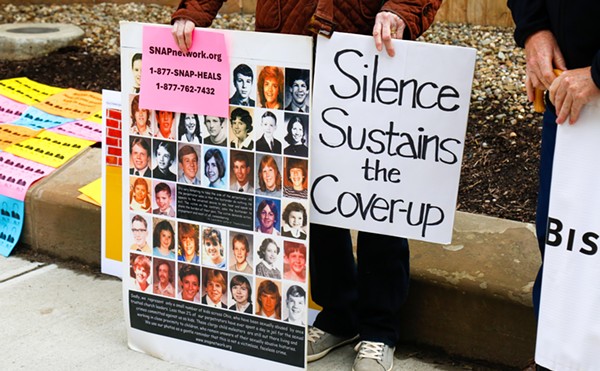1. Isolée, Wearemonster (Playhouse): What is this "we" in the title of Rajko Müller's sophomore full-length under the name Isolée? Does Müller roll in the royal plural? Is he as schizophrenic as the gooey melodies of Wearemonster? Or did Müller just know he'd have a monster critical hit on his hands when he released this disc, which was five years in the making? Whatever the reason, we're ecstatic to be inundated with Müller's cloisters of detuning inner voices. Even as songs progress with the resolute oscillations of Chicago house, they adhere Krautrock and Kompakt techno to flitting eight-bar excursions with pliable chord progressions.
2. Jamie Lidell, Multiply (Warp): Many artists have long touted electronic composition's ability to submerge their humanity, and sure enough, 100 albums that sound like whales with metallic penises performing cervical calligraphy now come out every year. Jamie Lidell's sophomore full-length stands out by how wholly it embraces the opposite end of the spectrum, sounding like a reverent, soul-crooning tribute to mid-'60s Motown and Stax Records. It's only on repeat listens that you begin to recognize the nuances of mischievous, intricate embroidery threaded throughout Lidell's silky facade. This digitally flecked funk is about strutting elation as much as it's about Princely electronic vamping .
3. Ellen Allien, Thrills (Bpitch Control): Allien's third full-length exhibits an uneasy tug, swept by nervy synths atop cleft percussion. Melancholic and overdriven, existing between the Bpitch label's splenetic and kinetic strains of techno and electro, Thrills' frosty austerity never overwhelms the CD's galvanic, sweat-beaded contortions.
4. Dominik Eulberg, Kreucht & Fleucht (Mischwald): For every musical genre, there's a formative tipping point: an album that says almost more about the movement than it does about actual, well, movement. Kreucht & Fleucht, a digitally etched double-CD mix by German producer Dominik Eulberg, may well be that collection for "ketaminimal" house. Two discs loosely translated as "Crawling" and "Flying" feature artists like Alex Smoke, TrentemØller, Nathan Fake, Robag Wrume, Luciano, and Wighnomy Bros. The mix explores the phantasmagorical state of German underground dance -- a haunted friction of clarity and clatter.
5. Ewan Pearson, Sci.Fi.Hi.Fi, Volume 1 (Soma): Though increasingly rare, all the great mix CDs have that moment when physiology and melody synchronize; these mixes don't differentiate between Balearic, Italo, arpeggiated, and merely stabbing, because your body doesn't distinguish between the beats, once it's incessantly jackin'. On Sci.fi.Hi.fi, British expat producer Ewan Pearson achieves this peak-hour concurrence, establishing an electro-funk lockstep that he draws out for over an hour without drawing it thin. International remixers -- including Joakim, Serge Santiago, Random Factor, Riton, Mugwump, and Pearson himself -- establish an exquisite, percolating thrust, gliding from glistening to sleazy and back.
6. Marc Leclair, Musique Pour 3 Femmes Enceintes (MUTEK): It's been a tough couple of years for purists. The machinist proponents of "IDM" and "clicks + cuts" no longer hold the cachet they once did; how can they, when there are such sassy new idioms as "heroin house" and "micro-goth" to sway people's attention toward the dance floor? But every once in a while, a CD comes along to show that the ghost in the machine is still being exercised, not exorcised. With these crumpled textures, Marc Leclair (aka Akufen) edged out Monolake's Polygon Cities as the year's finest example of transmogrifying tonality, electrostatic topography, and halo-pocked ultrasounds.
7. Richie Hawtin, DE9:Transitions (Novamute): Berlin-based and Canadian-bred techno producer Richie Hawtin thinks about his track selections as not only a collection of X, but also of Why. Why be restricted to a compact disc's 74 minutes and stereo separation? While tracking DE9:Transitions, Hawtin asked that very question, and using Ableton Live software, he renders an immersive affair that at times blasts out up to six simultaneous tracks. The result is never knotty -- especially on the 96-minute surround-sound DVD, which also features a short film documenting Hawtin's technical accomplishment.
8. The Remote Viewer, Let Your Heart Draw a Line (City Center Office): Admit it. You already assume that every electrocoustic arrangement is the work of some isolated geek in a hushed huddle with a keyboard. So it's nice to come across "electronic" music that's so unabashedly the work of geeks using a mic as confessional-conduit in their bedrooms. This melancholic soft-focus folktronica -- the work of Craig Tattersall and Andrew Johnson, founding members of blip-bliss post-rockers Hood -- is a series of rich, resonant Mùmlike tones, loosely sketched from piano, bass, and guitar, that palpitate even as they dissipate. Fragile as tundra grass, Let Your Heart Draw a Line features crackly drifts of drowsy sighs and bleary blinks that conjure a sepia-toned vulnerability.
9. Bloc Party, Silent Alarm Remixed (Vice): A track-for-track reinterpretation of the debut of this British post-modern art-punk quartet, Silent Alarm Remixed is the logical extension of the past few years' traipses through both post-punk and lap-pop's rhythmic legacies. Additionally, the CD features the talents of 14 remixers, including M83, Ladytron, and Four Tet. Half the tracks are compellingly flooded in sputtering harmonics; the other cuts temper yelping with dry kicks and heavily ridden snare skitters (the indie party cadence du jour), marking a trend of dance-punk albums that are as good for boutiques as booty-shaking.
10. M.I.A., Arular (XL): The unflagging hype directed towards M.I.A.'s debut boded well for the crushworthy Sri Lankan. So was the wait worth it? Well, for anyone curious enough, there was no wait; M.I.A.'s mangled dancehall hooks found themselves widely distributed on mixes such as Diplo's 2004 Piracy Funds Terrorism, well before the Honda ads diluted as much as they disseminated the globalist rebel revelry. For all those relying on traditional channels, Arular's electro mélange ended up being highly useful as a multi-culti primer during a year in which baile funk, reggaetón, and Baltimore Club entered the lexicon of the mass audience.











